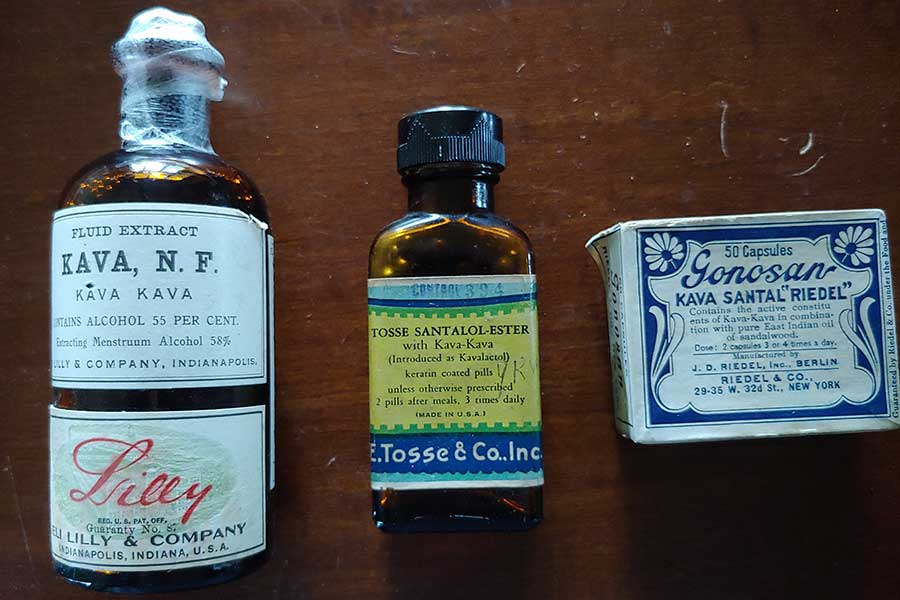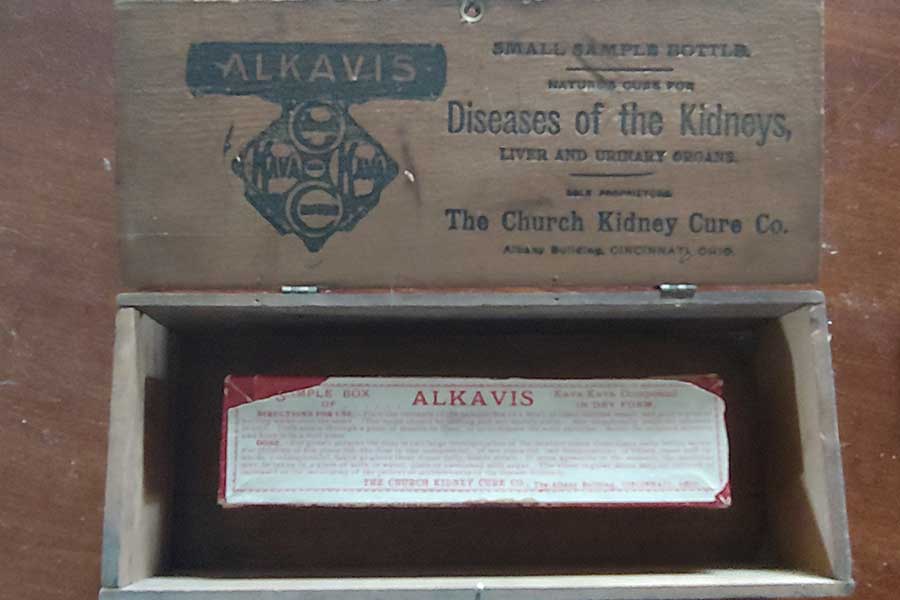Pinning down the history of kava is no easy feat, and the path to booming kava bars and exports to the US has been tumultuous. One thing we know for sure, though, is that kava has been important in the Pacific Islands for centuries. Kava has been used in ceremonies, folk medicine, and traded as gifts. It is also believed that kava was easily carried by early seafaring island explorers when they traveled and that this led to the spread of kava across the islands, to Hawaii, and eventually— luckily for us— to the continental US.
Kava Comes to the Continental US
Kava made its way to the continental United States from Hawaii. During the early part of the 20th century, it was sold in American pharmacies and was incorporated into all sorts of capsules and concoctions as a medicinal aid. Kava uses included treatment for things like gonorrhea, kidney disease, and nervousness. In 1900, kava extract even appeared in the Sears Roebuck catalog as a “temperance wine,” an alternative to alcoholic drinks and rum.



1990s Kava Boom
The 1990s saw a kava boom in the US, and demand for kava from Fiji spiked almost 500% from 1997 to 1998. This was a pivotal moment in the history of kava. Pharmaceutical companies and medical studies were a major contributor to the surge in demand for kava. In 1996, a German study took 29 patients with chronic anxiety and gave them a daily dose of kava for four weeks, while 29 others took a placebo. Symptoms were greatly reduced in the patients that took the kava dose compared with the placebo group. This study (and the publicity around kava in the same year) sent kava sales rocketing in the US as people looked to kava as a natural aid for anxiety.
After that, more and more chemical analysis was launched. People were noticing kava and the positive effects kava can have, and they wanted to know more. As the studies pressed forwards, sales in kava continued to grow and drive revenue for kava-growing villages in the Pacific Islands. In the late 1990s, several major beverage companies even started to incorporate Kava as an ingredient in their products. For example, Vitamin Water launched their (now discontinued) “Stress-B,” a potent lemon-lime beverage that featured kava and St. John’s Wort.
Controversy
Kava’s boom was followed by a devastating hit. In 2001, kava’s image took a massive hit and the history of kava changed course. Concerns were raised about the safety of kava— particularly with regards to liver toxicity— which led to restrictions and regulations in the US and countries like Germany and Australia. It also triggered some reports by the CDC and FDA, who issued a (since archived) advisory statement stating that kava-containing supplements may be associated with severe liver injury. The questions around the potential hepatotoxicity of kava led American regulatory officials to investigate kava. News stories began surfacing, culminating with a front-page article in the USA today, and kava’s image was temporarily tarnished.
Kava Gets the Green Light
After a great deal more medical analysis, the World Health Organization ruled in 2015 that kava is, indeed, safe and not toxic to the liver as had been previously claimed. The WHO ruling on Kava— and the results of various other studies showing the benefits of kava— has put the spotlight back on kava. Businesses around the US have once again been scrambling to secure kava and prepare for another surge in demand. Pharmaceutical companies, bars, and beverage industry giants are once again looking at bringing kava into their product lines.
The kava bar phenomenon has exploded onto the US market in a big way as well. One of the country’s first kava bars opened in Boca Raton, Florida, in 2002. Since then, more and more kava bars have been popping up across the states, and kava drinking has been rapidly gaining popularity.
As we move into the middle of 2021, the good trends seem set to continue! The history of kava continues to evolve and more and more people are curious about kava and kava benefits. There’s a growing interest in natural products and products that are less harmful than alcohol and other substances, which is putting kava on the map in a big way. More and more people are turning to kava for calming effects, health benefits, and as a social drink.
Bula!


